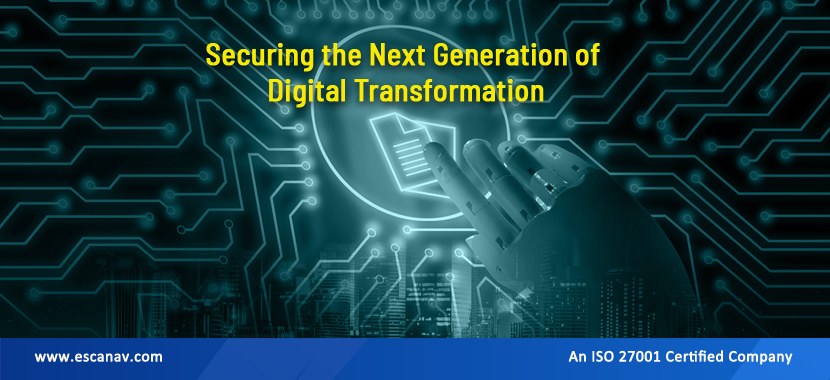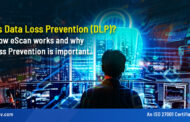Cybercrime has grown increasingly sophisticated due to the digital transformation-driven expansion of attack surfaces. Businesses and government agencies of all sizes are rapidly adopting digital business models that allow them to respond to evolving consumer demands, process transactions, and respond to real-time intelligence – thus improving their agility, productivity, and quality of life, while improving business outcomes. However, this transformation goes far beyond the corporate world. An unprecedented amount of change is taking place in society due to digital transformation. Technology fundamentally changes how we learn, work, socialize, shop, manage finances, and interact with others. Much more change is on the way with technologies such as artificial intelligence and augmented reality, which are still in their infancy.
Multi-cloud networks, shadow IT, IT, OT, and IoT convergence, and mobile workers, as well as hyper-connected networks, are all increasing the attack surface and the vulnerability of businesses, people, and data.
In addition to digital technologies and incremental productivity gains, this transformation also takes on a broader scope. By harnessing digital technologies, we can move from intuitive to data-driven decisions, resulting in exponential growth and innovation. Innovation and productivity must be balanced with functional security and cybersecurity.
Convergence increases the risks of digital transformation
Optimizing resource allocation and consumption is possible by proactively and predictively analyzing data. The potential of digital transformation and convergence to impact our world is evident through numerous examples. Previously separate networks are now interconnected, such as smart cars, smart homes, and smart cities. By interacting directly with citizens online, smart buildings, smart devices, and even smart cars, cities will become smarter. This will enable them to dynamically reroute traffic, control the use of critical infrastructure resources like water and energy grids, actively monitor city services, and respond more efficiently to events of all sorts, from conventions to emergencies. Weather to emergencies.
The issue of cybercrime is a growing concern due to the expansion of the attack surface and the increasing sophistication of bad actors driven by digital transformation. Companies and government agencies of all sizes are adopting digital business models to respond quickly to changing consumer needs, process transactions, and react to real-time intelligence. This transformation extends beyond the corporate world and is changing society at an unprecedented scale, affecting how we learn, work, socialize, shop, manage finances, and interact with the world. Emerging technologies like artificial intelligence and augmented reality will further accelerate the pace of change.
Digital transformation enables data-driven decision-making, resulting in exponential growth and innovation. However, innovation and productivity must be balanced with functional security and cybersecurity. The convergence of previously separate networks, such as smart cars, smart homes, and smart cities, increases the risks of digital transformation. Smart cities, for instance, can dynamically reroute traffic, control the use of critical infrastructure resources like water and energy grids, monitor city services, and respond more efficiently to events like weather emergencies by interacting directly with citizens online.
Traditional security strategies are not scalable.
Globally, digital transformation is transforming the way we communicate and conduct commerce. Security threats and compliance requirements are also being introduced as a result. Today’s converging networks make it impossible to secure IT and networks in the traditional manner. Internet protocols and infrastructure that were set up decades ago still remain part of the Internet on which this all runs. Meanwhile, data volumes have increased by nearly 40X in recent years due to the proliferation of applications, access points, and connected devices.
While most data no longer stays within the traditional enterprise network, we continue to approach security in an outdated and insufficient manner. In part, the problem is that infrastructure changes are often approached as individual projects rather than as part of a holistic transformation. To protect them, we deploy isolated, one-off security solutions, which complicate management and reduce visibility.
The network security system should extend to wherever the data resides as an integrated, single system. It is imperative that we can not only view and secure all infrastructures and devices at one time, regardless of their location or type, but also coordinate resources to enhance detection, automate response, and dynamically adapt to changes in the network. We are currently experiencing so much change that an integrated security system able to react to threats even at digital speeds is not enough.
Converged Networks Require Converged Security
To secure converged networks, we need to move from an isolated and traditional security system based on open standards to a security-based system based on integrated security tools and open standards. Additionally, this approach will need to incorporate automation in order to move beyond signature-based security to behaviour-based security. With the combination of a holistic security approach and advanced behavioural analytics, it is possible to manage risks more effectively and predictably. With this technology, organizations can effectively shorten the interval between detection and mitigation by implementing security changes dynamically in response to new threats and shifting risk profiles.
In an eScan-based security approach, true “auto-resiliency” is the natural outcome. By using such a system, user and device intent will be determined, threats can be detected or even anticipated in cyber-relevant times, key assets will be automatically identified and updated, compromised devices or applications will be isolated, threat intelligence across different networks and industries can be correlated, and security can be dynamically mapped to changing network infrastructures, even in converged environments. In addition to centralizing management, ensuring a consistent posture, orchestrating policies automated, and responding to threats autonomously, such an approach facilitates centralized management.
Digital transformation is driving innovation and economic growth that are transforming our society. For the entire digital industry to achieve this without compromising everything we hold, security needs to be rethought. Now is the time to get started. Get in touch with us.







